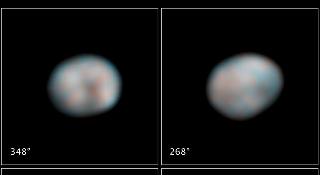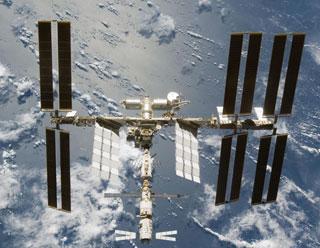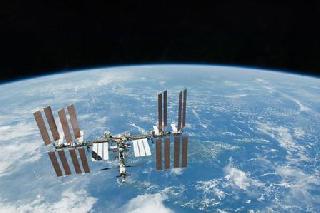
NASA's Hubble Space Telescope snapped these images of the asteroid Vesta in preparation for the Dawn spacecraft's visit in 2011. Photo by NASA/ESA/STScI/UMd
PASADENA, CALIFORNIA (BNS): NASA's Hubble Space Telescope has captured images of the large asteroid Vesta that will help refine plans for the Dawn spacecraft's rendezvous with Vesta in July 2011.
Now scientists have constructed a video from the images that were obtained by Hubble's Wide Field Camera 3 in February to help improve pointing instructions for Dawn as it is placed in a polar orbit around Vesta.
NASA said analyses of Hubble images have revealed a pole orientation, or tilt, of approximately four degrees more to the asteroid's east than scientists previously thought.
This means the change of seasons between the southern and northern hemispheres of Vesta may take place about a month later than previously expected while Dawn is orbiting the asteroid.
The result is a change in the pattern of sunlight expected to illuminate the asteroid. Dawn needs solar illumination for imaging and some mapping activities.
"While Vesta is the brightest asteroid in the sky, its small size makes it difficult to image from Earth," said Jian-Yang Li, a scientist participating in the Dawn mission from the University of Maryland in College Park.
"The new Hubble images give Dawn scientists a better sense of how Vesta is spinning, because our new views are 90 degrees different from our previous images. It's like having a street-level view and adding a view from an airplane overhead."
Li and his colleagues looked at 216 new images -- and a total of 446 Hubble images overall -- to clarify how Vesta was spinning.
Dawn is approximately 216 million kilometers (134 million miles) away from Vesta. Next summer, the spacecraft will make its own measurements of Vesta's rotating surface and allow mission managers to pin down its axis of spin.
 Previous Article
Previous Article Next Article
Next Article












The Indian Air Force, in its flight trials evaluation report submitted before the Defence Ministry l..
view articleAn insight into the Medium Multi-Role Combat Aircraft competition...
view articleSky enthusiasts can now spot the International Space Station (ISS) commanded by Indian-American astr..
view article